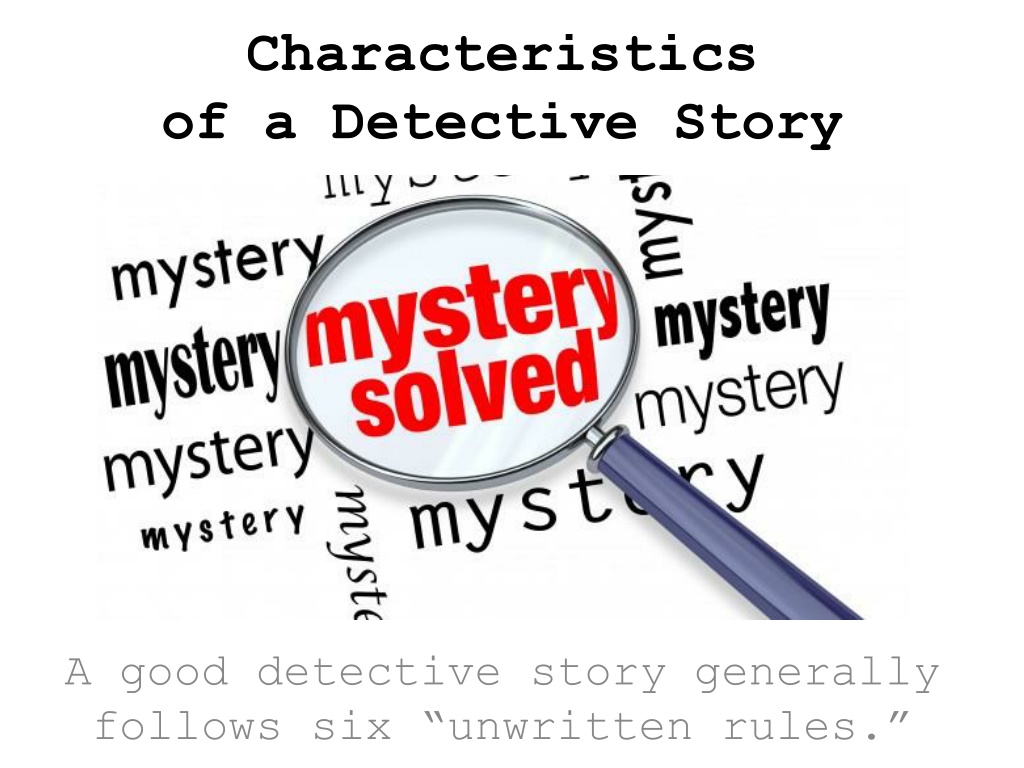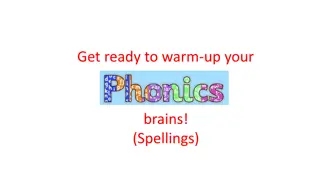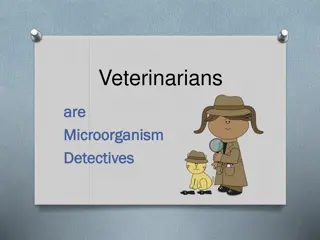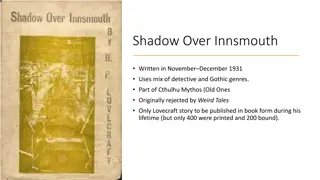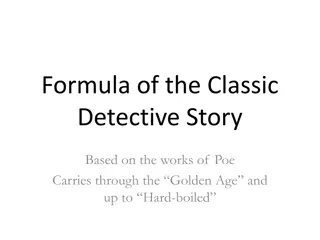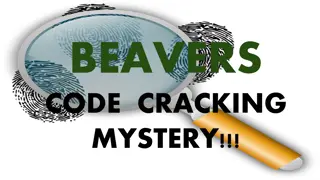Unveiling the Essence of a Detective Story
A detective story revolves around six unwritten rules: the significance of the crime, a memorable detective character, an exceptional opponent, early introduction of suspects, clues available to the reader, and a logical, plausible solution at the end. These elements make the genre intriguing and engaging for fans of mystery and crime fiction.
Download Presentation

Please find below an Image/Link to download the presentation.
The content on the website is provided AS IS for your information and personal use only. It may not be sold, licensed, or shared on other websites without obtaining consent from the author.If you encounter any issues during the download, it is possible that the publisher has removed the file from their server.
You are allowed to download the files provided on this website for personal or commercial use, subject to the condition that they are used lawfully. All files are the property of their respective owners.
The content on the website is provided AS IS for your information and personal use only. It may not be sold, licensed, or shared on other websites without obtaining consent from the author.
E N D
Presentation Transcript
Characteristics of a Detective Story A good detective story generally follows six unwritten rules.
C. Hugh Holmans A Handbook to Literature defines a detective story as a novel or short story in which a crime, usually a murder the identity of the perpetrator unknown is solved by a detective through a logical assembling and interpretation of palpable
First, the crime must be significant, worthy of the attention it receives. Most stories involve murder, though Conan Doyle tied the majority of his crimes to greed and theft.
Second, the detective must be in some way a memorable character. He or she must be very intelligent, of course, unusually clever and observant, but also quirky, possessing perhaps some idiosyncrasies that
Third, along with an exceptional detective, there must be an outstanding opponent, a criminal clever enough to be a match for the hero. Solving the crime can t be too easy.
Fourth, because a large part of the attraction of a detective story is the opportunity for the reader to try to figure out the solution along with the detective, all suspects of the crime must be introduced early in the story.
Fifth, all clues the detective discovers must be made available to the reader also.
Finally, at the end of the story, the solution must seem obvious, logical, possible. The crime must not have resulted from accident or supernatural intervention, and the detective must be able to explain all aspects of
